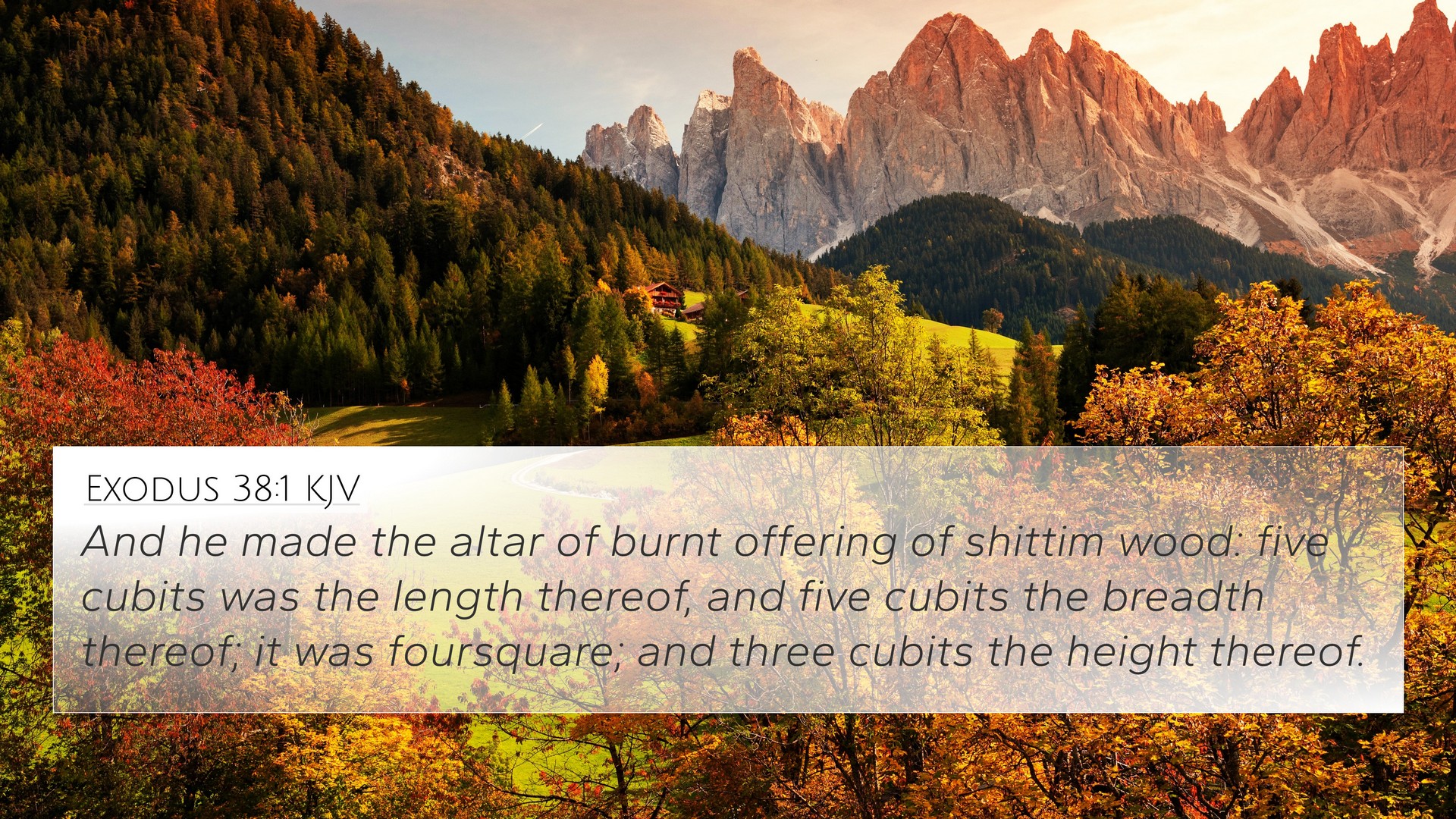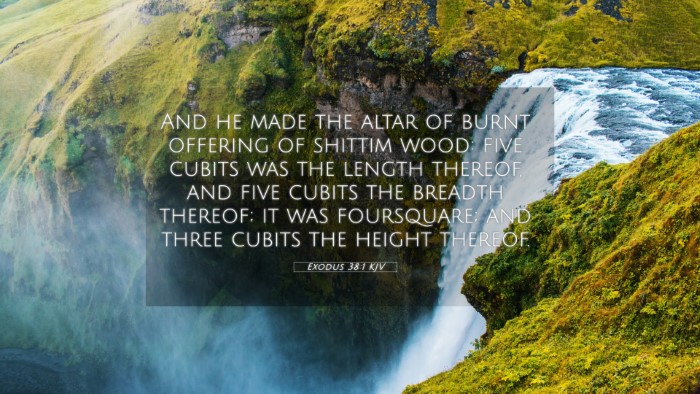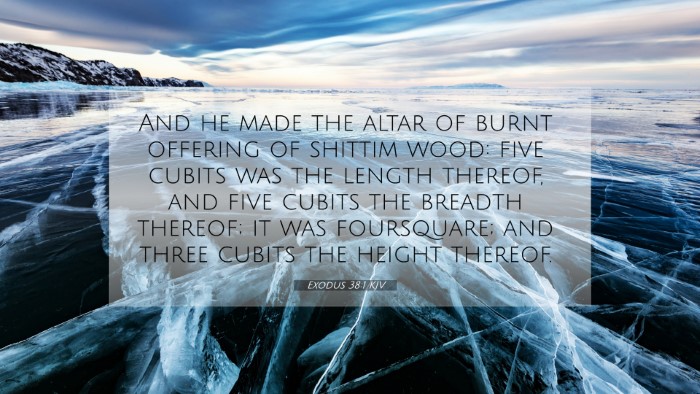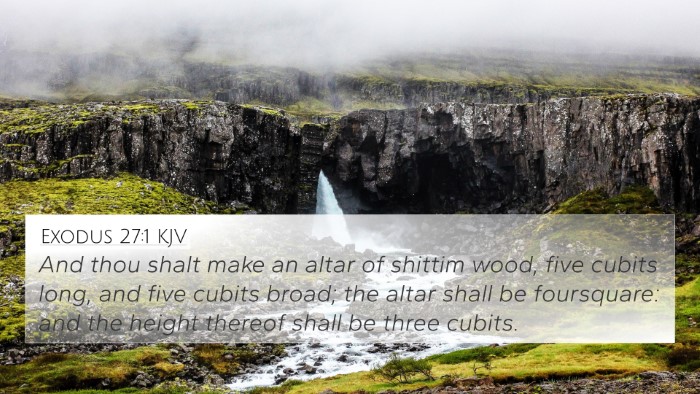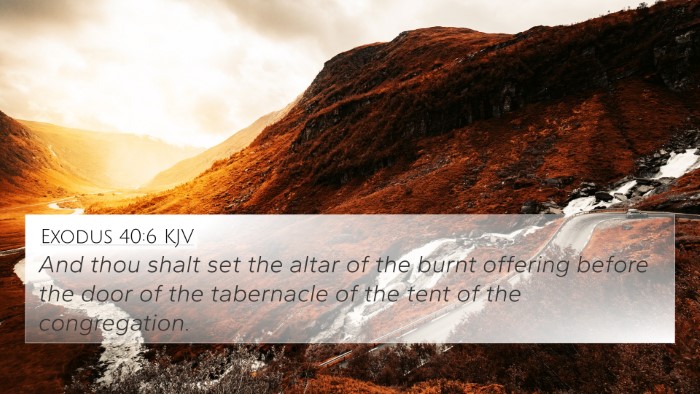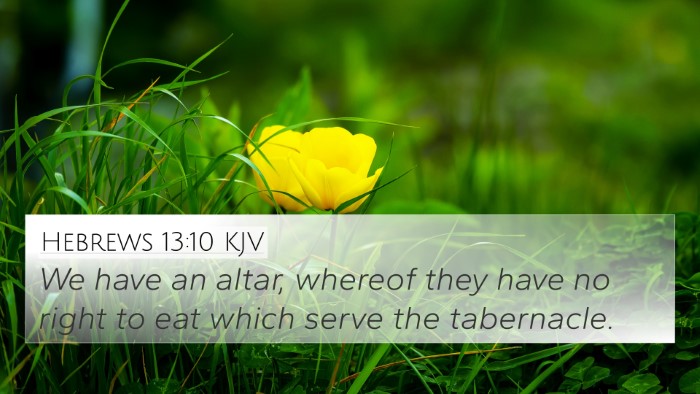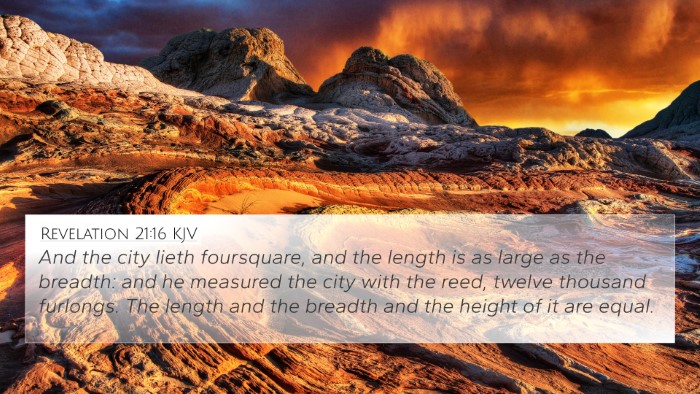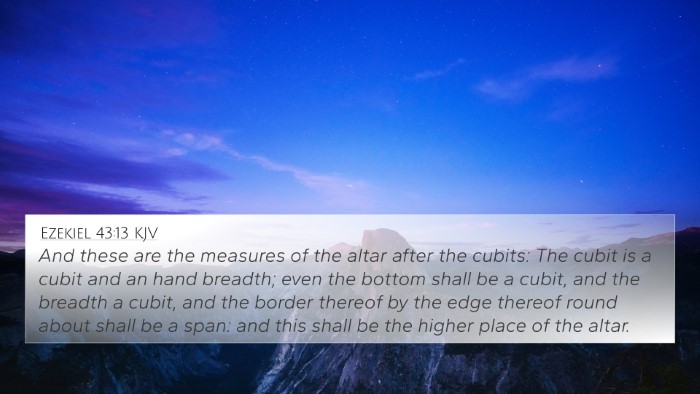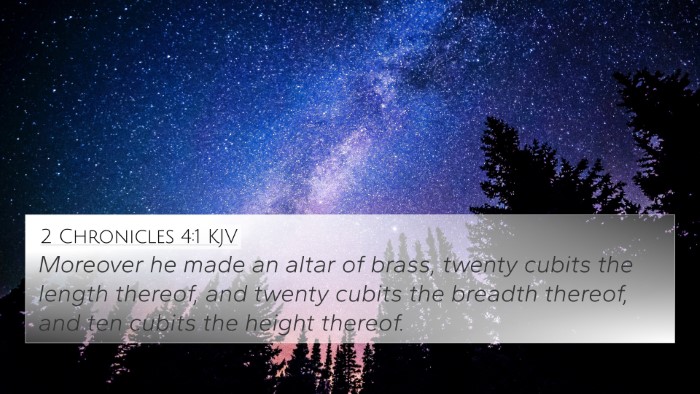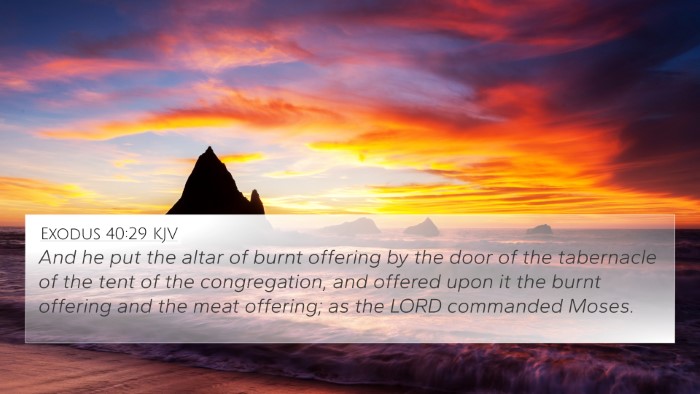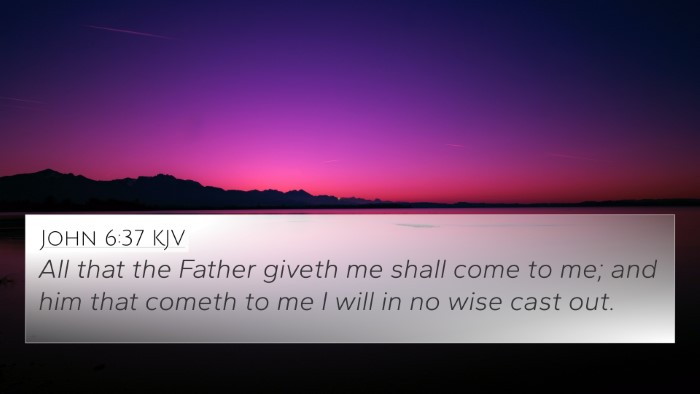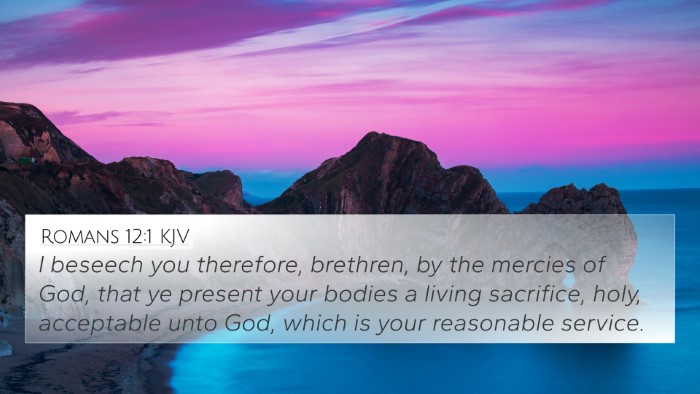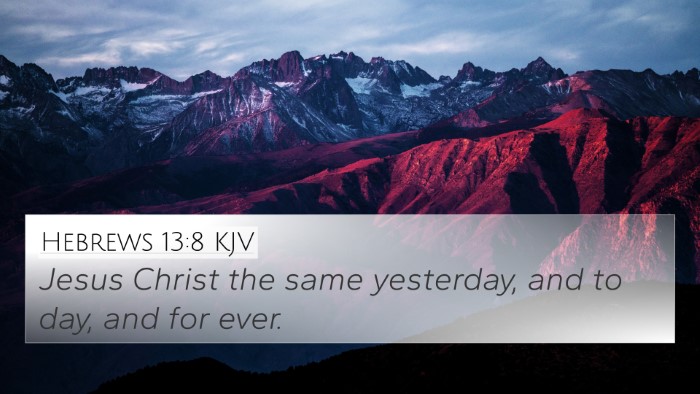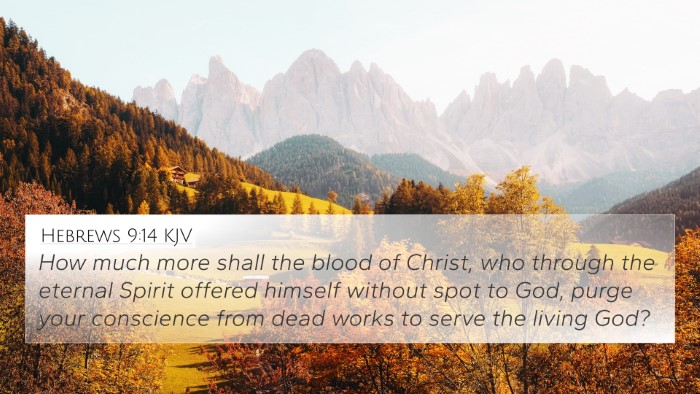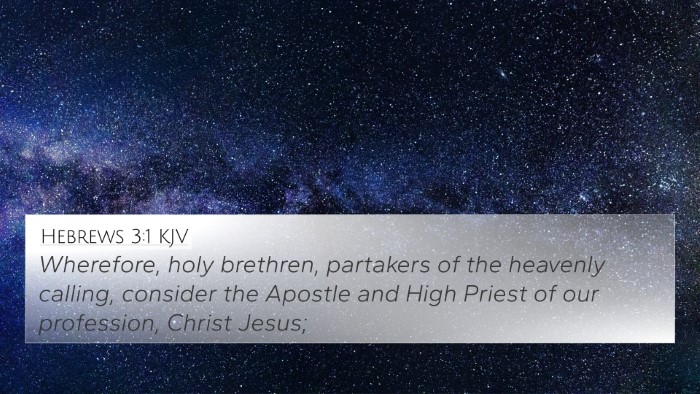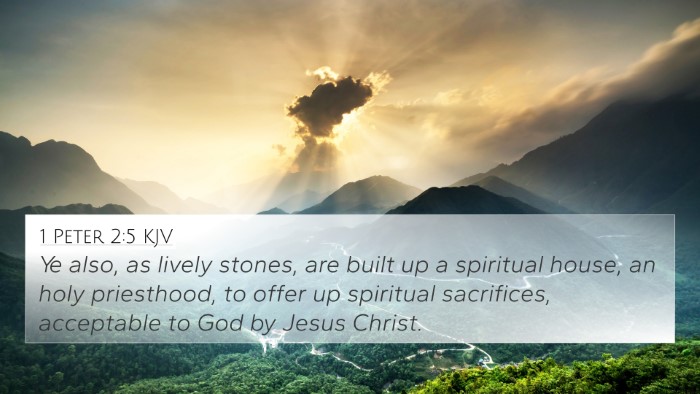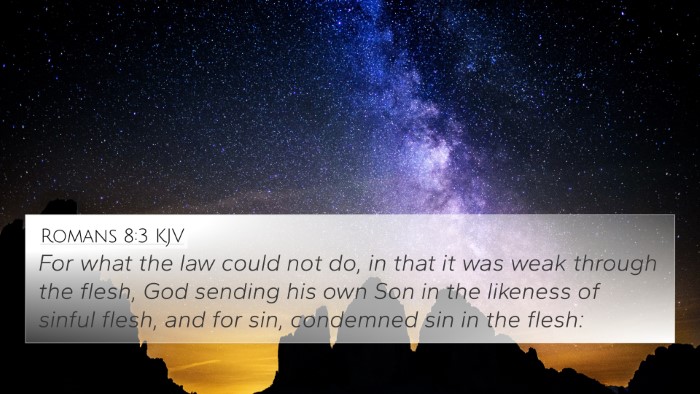Understanding Exodus 38:1: A Comprehensive Analysis
Exodus 38:1 states: "And he made the altar of burnt offering of shittim wood: five cubits was the length thereof, and five cubits the breadth thereof; it was four square; and three cubits the height thereof." This verse focuses on the construction of the altar, an essential element in the worship practices outlined for the Israelites.
Significance of the Altar
The altar of burnt offering represents a place of sacrifice where the people could atone for their sins. As highlighted by Matthew Henry, the altar is symbolic of Christ’s ultimate sacrifice, pointing to the future fulfillment in the New Testament. The meticulous details in the dimensions and materials signify God’s desire for proper worship and holiness.
Materials and Dimensions
In this verse, the use of shittim wood (also known as acacia wood) carries significance. According to Adam Clarke, this wood is robust and resistant to decay, symbolizing strength and durability, representing the enduring nature of God’s covenant. The specified measurements (five cubits by five cubits and three cubits high) reflect a divine order and precision in God’s blueprint for worship.
Thematic Connections with the Altar
This verse presents various thematic connections and cross-references throughout the Bible:
- Hebrews 10:1-4: Discusses the insufficiency of the old covenant sacrifices, directly connecting to the significance of sacrificial atonement.
- Leviticus 1:1-9: Outlines the procedures for burnt offerings, establishing foundational practices for the sacrifice system.
- Romans 12:1: Calls believers to be living sacrifices, linking the foundational act of burnt offerings to the spiritual implications for Christians.
- 1 Peter 2:5: Compares Christians to a spiritual house, emphasizing the living stones that make up the body of Christ in relation to sacrificial worship.
- John 1:29: Identifies Jesus as the Lamb of God, further elucidating the connection between Old Testament sacrifices and New Testament fulfillment.
- Exodus 27:1-8: Offers additional details about the design and construction of the altar, reinforcing the importance of this structure in Israelite worship.
- Matthew 5:23-24: Jesus teaches about the importance of reconciliation before offering sacrifices, linking the spiritual and relational aspects of worship.
- Philippians 4:18: Mentions sacrifices acceptable to God, relevant for the understanding of offerings in the New Testament context.
- Hebrews 9:13-14: Discusses the blood of Christ versus the blood of bulls and goats, reinforcing the thematic contrast between the old and new sacrifices.
- Revelation 6:9: Illustrates the significance of the Christian martyrs as sacrifices, completing the thematic arc initiated in the Old Testament.
Bible Verse Connections
These connections between Bible verses offer valuable insights into the continuity of God's plan and the significant role of the altar in the overarching biblical narrative.
Through this careful examination of Exodus 38:1, we can grasp the importance of worship, sacrifices, and their ultimate fulfillment in Jesus Christ.
Tools for Cross-Referencing
To deepen your understanding, utilizing Bible cross-reference guides and concordances can enhance your study of how different scripture passages relate to one another. Such tools assist in identifying connections between the Old and New Testaments, facilitating a thorough and thematic Bible study.
Conclusion
Exodus 38:1 serves as a profound reminder of the significance of sacrificial worship in the life of the Israelites and how this foreshadows the ultimate sacrifice of Christ. By engaging in comparative Bible verse analysis and inter-Biblical dialogue, one can appreciate the intricate layers of meaning found within this verse and its theological implications.
